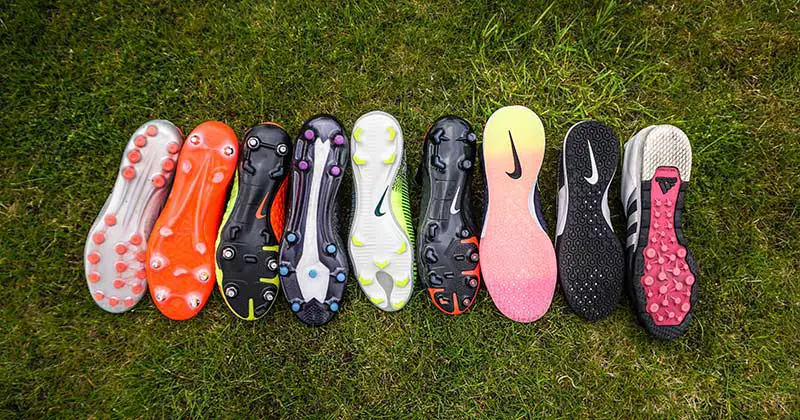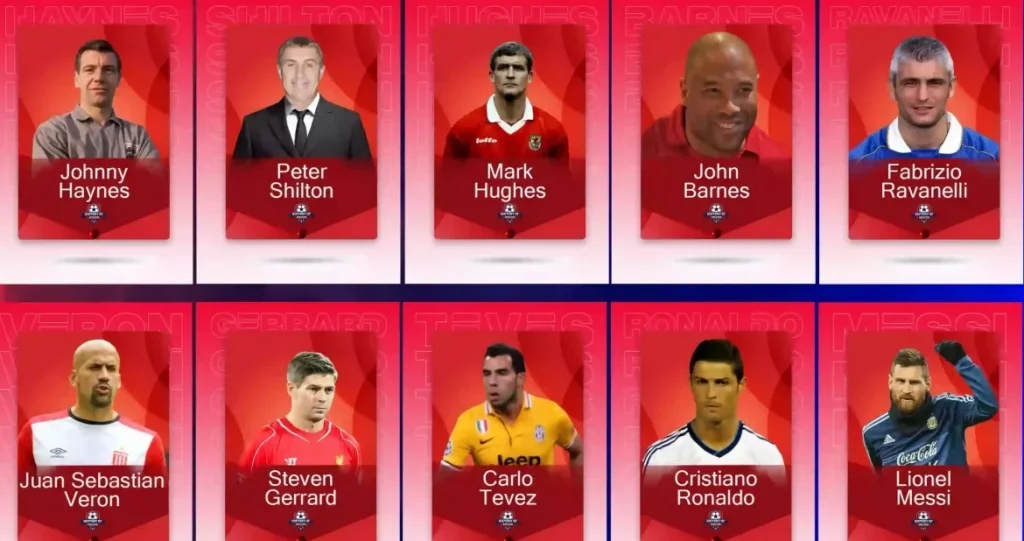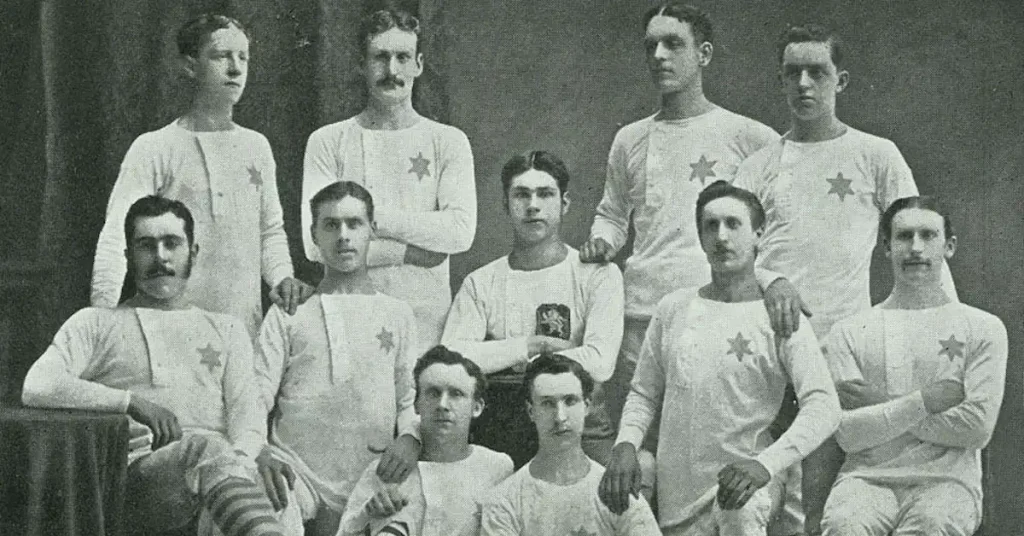Blades or studs? It’s a modern conundrum featuring discourse full of opinion and personal preference.
For more than a century, studs ruled supreme, boasting a total monopoly over the underside of boots, but as of 2005 and the release of the iconic Addidas Predator boots, a war of the cleats broke out.
When we buy boots, we are so often persuaded by what sticks in plain sight. Flashy colours, synthetic material, ‘precision’ technology and even the shape.
But strangely it’s all too common to completely ignore the most important thing for performance… What is underneath.
The soleplate, and how the studs are configured are the most important factors when deciding which boots to buy, and many a player has been hampered by poor choice of boot.
The soleplate is what makes a soccer boot work. Without it, there’d be no grip making changes of direction, turning and general agility useless.
For years the standard metal studs were the be-all and end-all that provided the necessary grip to play the game but blades offer a great alternative.
But the question is, when should you pick blades over studs?
With boots expected to perform on a variety of surfaces, with 4G pitches and typical grass turf both used, boots need to be optimised for both, but naturally, the two types of boots have their pros and cons.
What Are Conical Metal Stud Soccer boots?
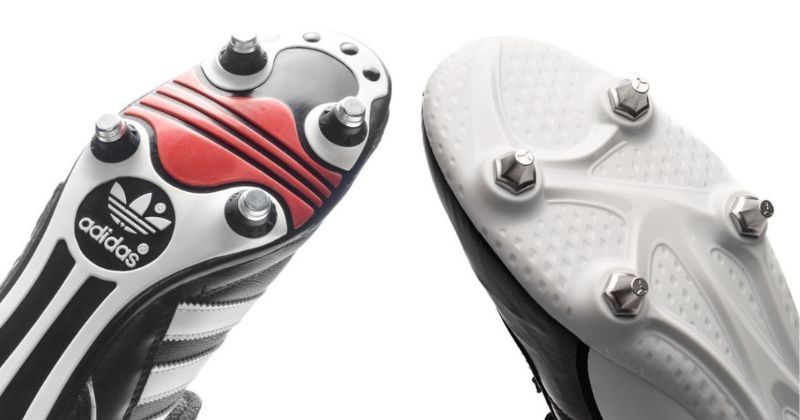
This upgrade on the old often features studs that are moulded straight to the sole plate, but some studs can be screwed into the soleplate by hand much like the boots of the past.
Of course, the screwed-in-by-hand variety does present the most immediate issue, in the much higher chance of losing a stud through the wear and tear of a game.
The moulded variant comfortably solves such a problem, and the pros will almost always opt for the fixed studs, leaving the screwed-in studs to the Soccer hipsters.
Conical studs work best on softer ground. They help gain traction on surfaces that provide less grip, making these the perfect choice for wet weather.
The larger surface area of the stud, combined with the additional length in comparison to blades gives players better traction.
Blades simply don’t anchor a player’s feet to the turf in the same way and will struggle to grip in such conditions.
What Are Blades On Boots?
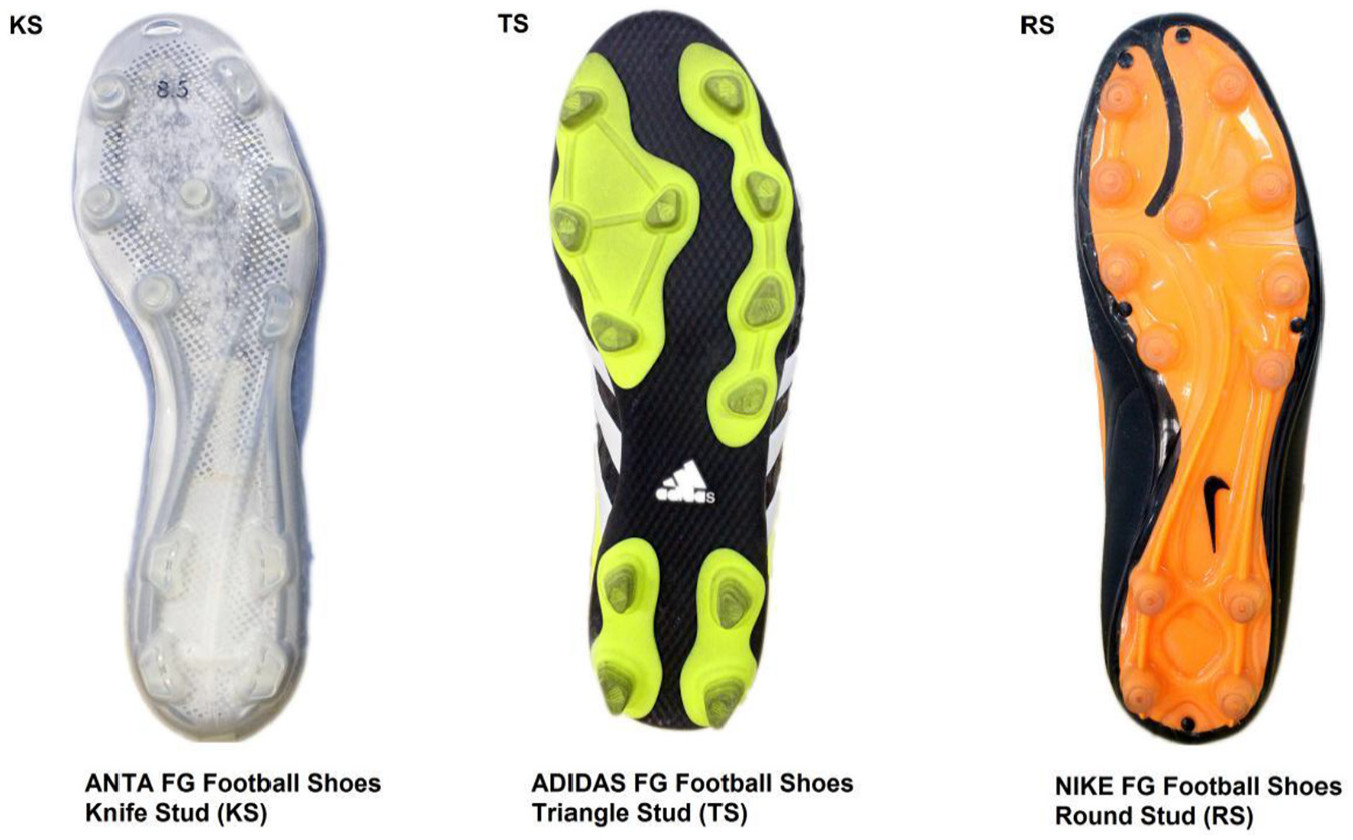
Since then, blades have been made out of plastic, and are much wider than before. They are wider, and can assume a variety of shapes, but typically take the form of a pyramid with a flat face pointing down instead of a point.
Blades work best for drier ground. The huge issue with studs when playing on hard surfaces is the length of them.
When running on harder turf with metal studs, the studs push up into the soles of your feet, which over 90 minutes gets incredibly uncomfortable and even painful.
In severe cases, it can feel like playing in platform shoes, but instead of a consistent raised sole, is propped up by 6 protruding studs.
This is most severe when used on cold ground in winter. Anybody who has suffered the struggle of playing on frozen ground with metal studs can attest to the pain and struggle it provides, to the point where the sport seems unplayable. It’s only slightly better than playing with metal studs on concrete, which is legitimately unplayable.
Blades work so much better on harder grounds as there are many more of them, and are typically shorter. With more points of contact, a player benefits from a much better grip on hard surfaces.
Are Metal Blades On Soccer Boots Banned?
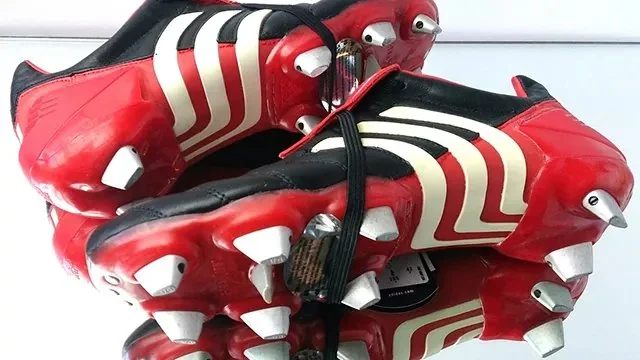
The major benefit of blades is their malleability thanks to being plastic and rubber. But early-bladed boots lacked this flexibility, making them suffer from the same issues as classic studs.
However, while the smaller points of contact in the 6 or so metal studs on a classic boot still allowed for quick changes of direction without much risk of injury.
Metal blades were too grippy, to the point where players were at much greater risk of injury when turning, as the foot would stay put while the leg and knee rotated.
Metal blades aren’t banned per se, but this clear issue has rendered them obsolete.
Naturally many players and managers spoke out about the issue, most notably, Sir Alex Ferguson banned his players from wearing them back in 2005.
As a result, manufacturers have moved onto more flexible designs and using shapes that aim to optimise the speed of a player’s direction changes without added injury risk.
What Is Best For Artificial Grass Pitches?
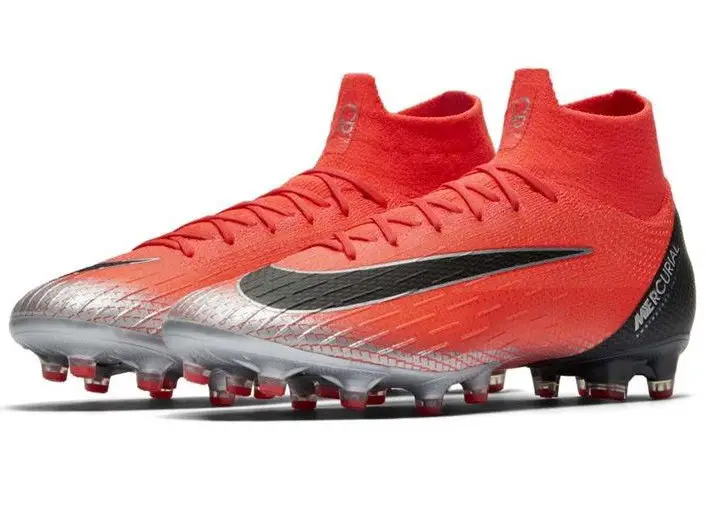
Metal studs would pull up the artificial turf, an issue that is much bigger on these pitches, as relaying the turf costs more, and could cause a safety issue.
You can wear blades on artificial turf, but even then it’s not exactly the optimal choice.
While blades are serviceable, the lack of give the pitch has makes it feel a lot more like walking on the pavement with blades. It has little give, and you’d be better off wearing Soccer trainers made for astro-turf over blades.
That’s not the best option, however, as thanks to the rise in popularity of artificial pitches, a new kind of boot made specially for 4G turf has been created.
Best of all these boots double as being suited to regular grass pitches too.
Known as ‘AG’ boots, the soles of these shoes are comprised of much smaller plastic rubber studs that can easily penetrate the ground by a few millimetres, without causing damage to the turf, or increasing injury risk.
These shoes are comfortably the best option on 4G pitches, for all parties involved, as they provide the best traction over any other kind of boot without damaging the turf.
What Are Hybrid Stud Soccer Boots?
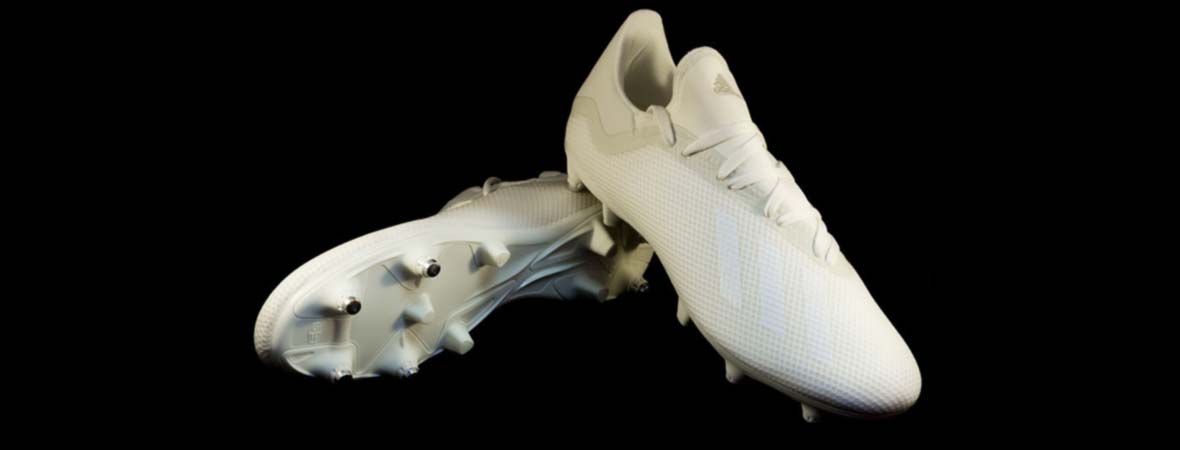
A hybridisation of the two seems to have worked well, with many top players now opting for a combination of the two.
You even have the option of removable studs and blades, so you don’t miss out on the old-school inconvenience of losing a stud or two by the end of the game.
This innovation is useful in all conditions on grass pitches, but the argument still remains as to whether they are necessarily better than just studs or just blades in the respective conditions they thrive in.
